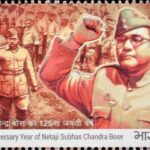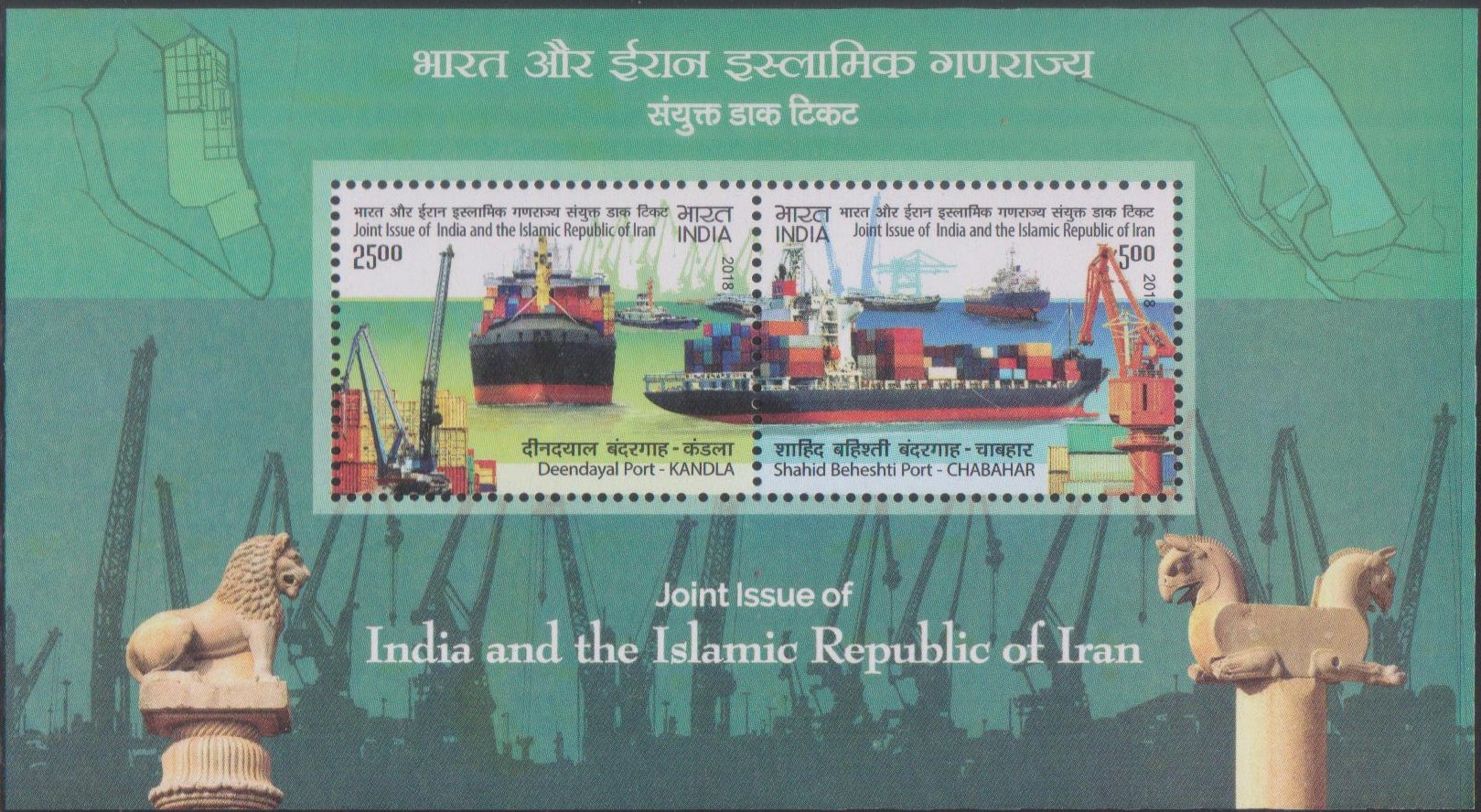
First Indian Flag Hoisting at Port Blair
Complete set of 3 nos. of commemorative postage stamps on the 75th Anniversary of the 1st Flag Hoisting at Port Blair by Netaji Subhas Chandra Bose, head of Azad Hind government :





 Issued by India
Issued by India
Issued on Dec 30, 2018
Issued for : Department of Posts is proud to release a set of three Commemorative Postage Stamps the total of whose denominations adds up to Rs. 75/- to mark the historic occasion of the 75th Anniversary of the first flag hoisting at Port Blair.
Credits :
Stamps/FDC/Brochure : Sh. Sankha Samanta
Cancellation Cachet : Smt. Neenu Gupta
Type : Miniature Sheet, Mint Condition
Colour : Multi Colour
Denomination : 4100, 2200 and 1200 Paise
Stamps Printed : 500710 each
Miniature Sheets Printed : 1.20 lakh
Printing Process : Wet Offset
Printer : India Security Press, Nashik
About :
- Port Blair in modern times, as the capital of the Andaman and Nicobar Islands, is a picturesque tourist location and serves as the gateway to pristine beaches and exotic marine life. To those interested in history, the place is a constant reminder of “Kala Paani” housing the Cellular Jail as well as the stories of torture and inhuman acts meted out to the prisoners, most of them being Indian revolutionaries of the freedom struggle. The first batch of freedom fighters of First War of Independence was brought here on 10 March, 1858, thus marking the beginning of the penal settlement. Since then, the convicts brought here, mostly political prisoners, suffered life imprisonment and hard labour under cruel and degrading conditions. Many were hanged, while others died of disease and starvation.
- The Cellular Jail, now a National Memorial is a witness to the glorious contribution of revolutionary patriots in the history of the Indian Freedom Movement. Many charismatic personalities were imprisoned here. Veer Savarkar, Ganesh Damodar Savarkar, Barindra Kumar Ghosh, Ullaskar Dutt, Indu Bhushan Roy, Prithvi Singh Azad, Trailokyanath Chakravarthy, Mahavir Singh among others; the catalogue is long and distinguished. The stories of their suffering and sacrifice for India’s independence and their defiance and valour in the face of imperial oppression, have elevated the Cellular Jail to a place of pilgrimage in India’s collective national memory.
- The more significant fact however, is that Port Blair was the first Indian territory liberated from imperial British rule. In 1943-44 during World War II, this territory served as the headquarters of the Azad Hind government under Netaji Subhas Chandra Bose. The island at the time was liberated from British rule by Japan which captured it during the World War-II.
- Netaji, accompanied by members of the Azad Hind Government and his staff had paid an official visit to the Andaman Islands from 29-31 December, 1943. He stayed at the former British Chief commissioner’s official residence on Ross Island. His visit followed the Japanese Prime Minister’s historic declaration at the Assembly of Greater East Asiatic Nations in Tokyo on 6 November, 1943 that the Andaman and Nicobar Islands would be transferred to the Provincial Government of Azad Hind.
- On 30 December, 1943 Netaji addressed a mass rally of Indians at the Gymkhana ground in front of the Andaman Club. On the same day, he hoisted the Tricolour for the first time at the Gymkhana Ground in Port Blair. He also announced the Islands as the first Indian Territory freed from the British rule.
- After the flag hoisting, Netaji visited the Cellular Jail the same afternoon. He spent two hours there going around the Indian Bastille. Describing his visit to the islands later, Netaji said, “For Indians the return of the Andaman represents the first territory to be liberated from British yoke. By the acquisition of this territory, the provincial government has now become a national entity in fact as well as in name. The liberation of the Andamans has symbolic significance because the Andaman has always been used by the British as a prison for political prisoners. Most of the political prisoners sentenced to servitude for conspiracies to overthrow the British Government – and there have been hundreds of them – were looked up in this island. Like the Bastille in Paris, which was liberated first in the French Revolution, setting free political prisoners, the Andaman where our patriots suffered is the first to be liberated in India’s fight for independence.” Netaji named Andaman Island as “Shaheed” and Nicobar Island as “Swaraj”.
- Today, the place where Netaji hoisted the flag stands as a great memorial.
- Text : Sh. Pallab Bose and material provided by the proponent.







